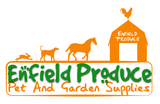A fortified insect food that improves the nutritional value of feeder insects such as crickets, woodies & mealworms.
About Feeding Insects Insectivorous species kept in captivity usually lack the diversity and quality of a natural diet in the wild. Feeder insects are often maintained on nutrient-poor substrates (eg. bran), which can lead to dietary deficiencies. Insects have no skeletal structure and are therefore a poor source of calcium.
Improving Insect Nutrition:
By maintaining the live feeder insects on Insect Booster, the nutritional value of the captive diet is significantly enhanced. This provides a means of supplying essential amino acids, essential fatty acids (omega-3 and 6), vitamins, minerals and colour-enhancing carotenoids. Supplying nutritionally improved feeder insects maintained on Insect Booster is more effective than simply “gut-loading” insects raised on inadequate diets. The table below shows the results of clinical trials after feeding Insect Booster for 14 days. Calcium levels and calcium to phosphorus ratio were significantly improved. This is a more effective method of supplying calcium than dusting insects with calcium powder.
The levels of other minerals, vitamins and colour-enhancing carotenoids were also significantly improved. Directions for Use For best results, supply insect booster to the feeder insects for at least 14 days prior to feeding animals. Moisture should always be available to insects and can be supplied as a piece of wet sponge, fruit or vegetable. Adult Insects (crickets & woodies) Supply Insect Booster as a dry powder in a shallow bowl or plate.
Insect Booster is a complete diet and does not require other foods to be added. Juvenile Insects (mealworms & fly pupae) Make a 50:50 mixture of Insect Booster with bran and supply as the substrate in which the pupae live.
Ingredients: Pollard, whey and soy proteins, methionine, vegetable oils, omega-3 & omega-6 fatty acids, vitamins, minerals & carotenoids.
Available in 300g, 5kg & 20kg.
Benefits of Insect Booster:
- High in Calcium – To ensure a positive calcium to phosphorous ratio in feeder insects.
- More Effective – Compared to dusting insects with calcium powder.
- Supplies Essential Nutrients – Minerals, vitamins, amino acids (e.g. methionine), fatty acids (omega-3 & 6) and colour-enhancing carotenoids.
Ingredients:
Wheat pollard, calcium carbonate, soy & whey protein isolates, methionine, vegetable oils, omega-3 & omega-6 fatty acids, carotenoids, vitamins A, B1 ,B2 ,B3 ,B5 ,B6 ,B9 ,B12 ,C, D3, K, biotin, phosphorus, potassium, sodium, magnesium, zinc, iron, manganese, copper, iodine, selenium.
Analysis:
| Protein | 18% |
| Fat | 5% |
| Moisture | 8% |
| Calcium | 9% |
| Vitamin A | 45000 IU/kg |
| Vitamin E | 1600 mg/kg |
| Carotenoids | 180mg/kg |
Pack Sizes: 300g, 5kg & 20kg.
Crickets & Woodies: Feed Insect Booster as a dry powder in a shallow bowl or plate. For optimum results, supply as the sole food to insects for 2-5 days before feeding out to animals. Moisture should always be available to insects and can be supplied as a piece of wet sponge or other absorbent material to avoid drowning.
Mealworms: Make a 50/50 mixture of Insect Booster with wheat bran and use as the substrate in which the mealworms live.


